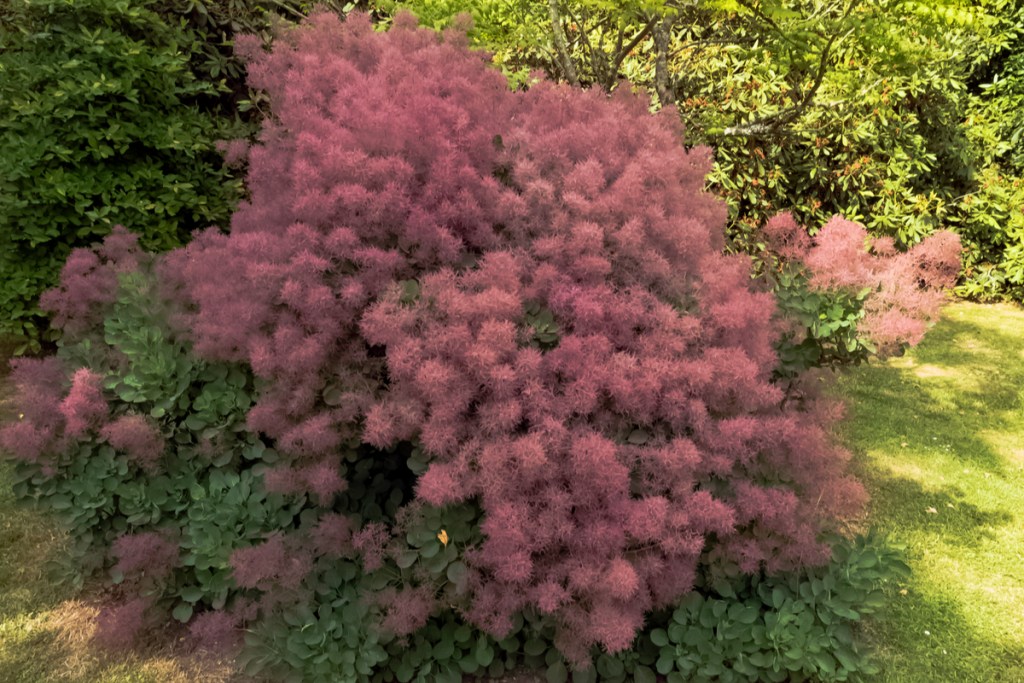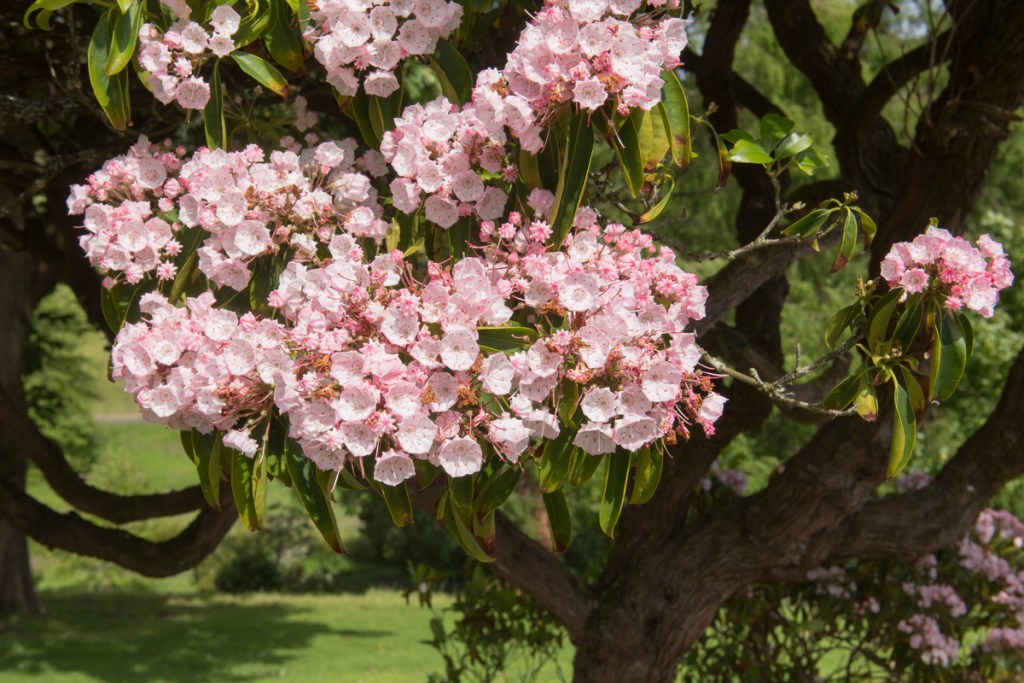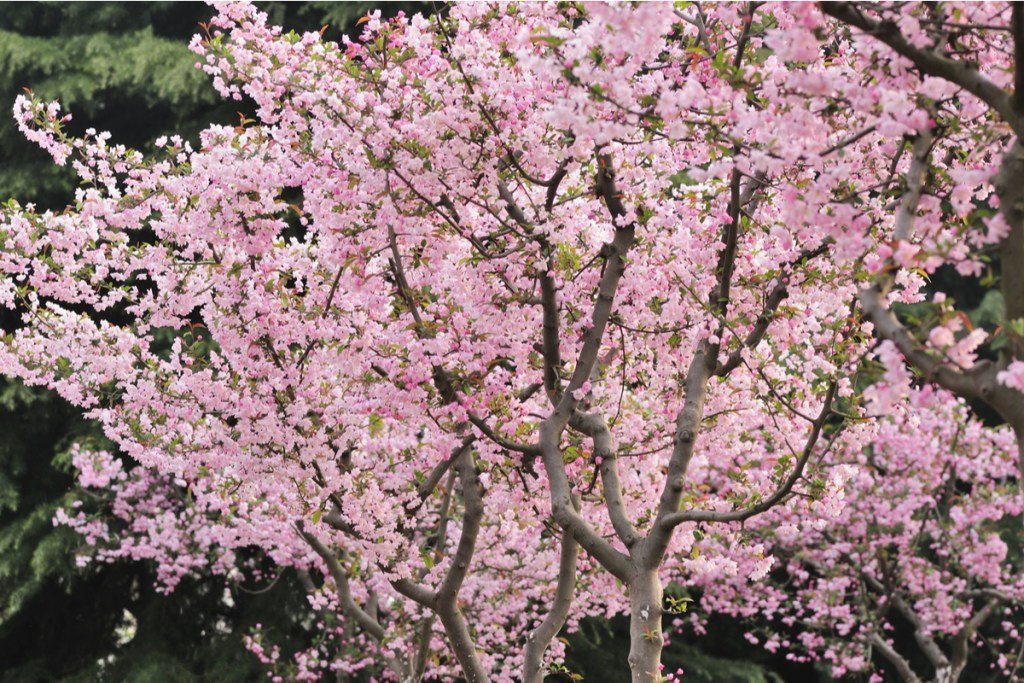Flower gardens are a beautiful source of joy for many gardeners, and fortunately, there are flowers of every size, shape, and color. Sometimes, though, regular flowers just aren’t enough! Do you need even more flowers in your life, perhaps even a full tree’s worth? If the answer is yes, then take a gander at these six trees. From trees with big, explosive blooms to trees with lots of tiny flowers, there’s sure to be a tree that will satisfy your floral needs.
Smoke tree
Smoke trees, as the name suggests, are trees that bloom with masses of fuzzy flowers that resemble smoke. The flowers can be anything from whitish brown to vibrant reds, pinks, and deep purples. This tree blooms throughout the summer and makes an excellent accent plant. Smoke trees are relatively small, growing between 10 and 15 feet tall, although they do get rather wide with a spread of 10 to 12 feet. Caring for smoke trees is relatively easy for beginner gardeners, with the only potential problem being their thin bark which, when damaged, can become infected. Plant them in full sun for the best blooms.

Dogwood
Dogwood trees are known for their simple, but lovely, white flowers that bloom in spring, followed by red berries that delight many birds. However, if you want the classic look of the dogwood tree with just a little more color, there are varieties that bloom pink and even red, as well. Dogwoods have the added benefit of being native to America, especially the East Coast, making them a great addition to any native pollinator gardens. Dogwoods are a medium-sized tree, growing to between 15 and 30 feet tall, but dwarf varieties also exist for smaller gardens.
Mountain laurel
If you’re in need of a tree that blooms in the shade, then the mountain laurel may be the tree for you. Although technically classified as a shrub, the mountain laurel can grow to 15 feet tall. You’ll see more blooms if it is planted in full sun, but it tolerates shade remarkably well and will still bloom. The flowers of the mountain laurel come in shades of white and pink and are bowl shaped. The mountain laurel has a name twin in Texas mountain laurel, which is not related but does have some lovely flowers of its own. Texas mountain laurel is much taller, though, and has purple-blue flowers.

Magnolia
Magnolia trees are known for their size, long life, and stunning flowers. These trees can become massive, with the tallest varieties topping out at around 70 feet with a spread of 50 feet. Magnolia trees can be a big commitment, as they can live for 80 to 100 years, or even longer in some cases. Their flowers, though, are well worth the commitment. Magnolia flowers are known for their beauty and strong, sweet scent. Although the classic magnolia flower is white or pink, there are many varieties that bloom in shades of purple and yellow, and some even have different shapes and sizes.
Crab apple
Crab apple trees, while unassuming in winter, explode into life during spring, branches thick with dark pink or white flowers. These trees are a favorite of bees and are a great way to attract pollinators to your garden. After the flowers come the fruit, which many birds enjoy but can also be a treat for people. Plant your crab apple tree in sun or partial shade and soon you’ll be enjoying the bright colors in spring and tasty crab apple jelly or pie soon after.

Japanese tree lilac
Japanese tree lilac is an elegant tree, perfect for picnics or relaxing under with a nice book. It grows to about 30 feet in height with a spread of 15 to 20 feet. Unlike other lilac trees, Japanese tree lilac flowers are not purple but instead are white or cream colored. The flowers are very small individually, but grow in tight clusters that give the appearance of much larger flowers. Japanese tree lilac blooms in early summer rather than spring and is a shapely tree even without any pruning or shaping.
These six flowering trees are a great place to start and will be sure to add color and texture to any garden or yard. Whether you prefer the smaller, more delicate trees, like smoke trees, or want something long lasting and sturdy, like a magnolia, there’s a flowering tree for you. Why not head to your local nursery and try one of these six marvelous trees in your garden?
Editors' Recommendations
- 6 incredible types of ivy to spruce up your garden
- Focus on color: Grow these peach-colored flowers to celebrate the Pantone color of the year
- Add heliotrope to your garden for stunning purple flowers all summer long
- These are our favorite biennial flowers for a garden
- Wondering what to do with dead flowers? Our favorite ways to give them new life



